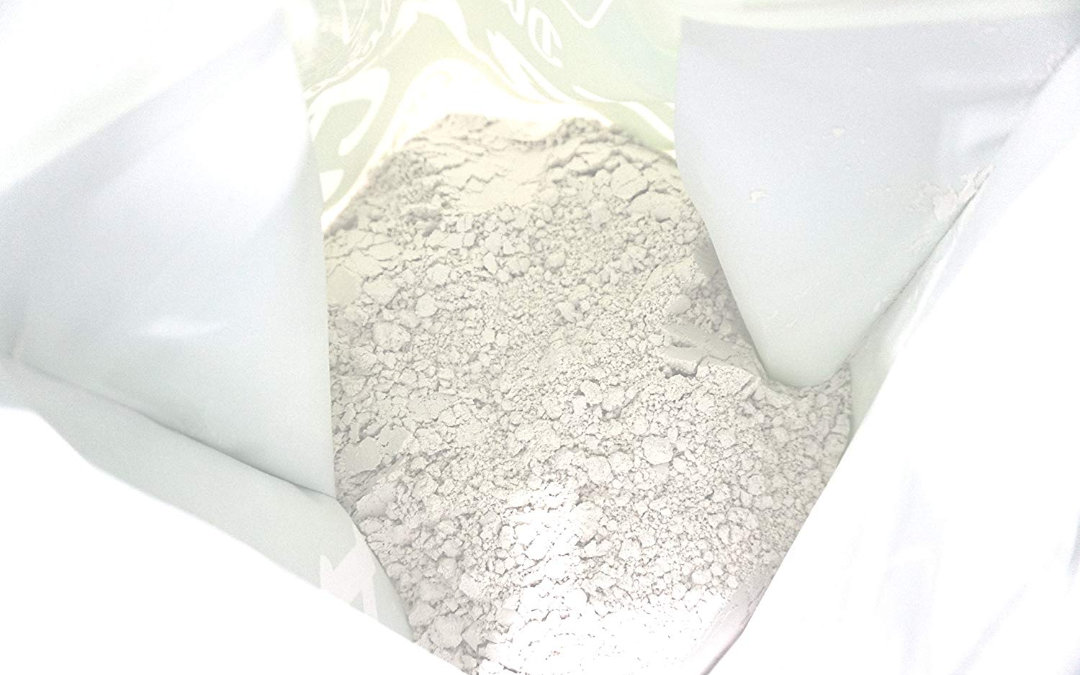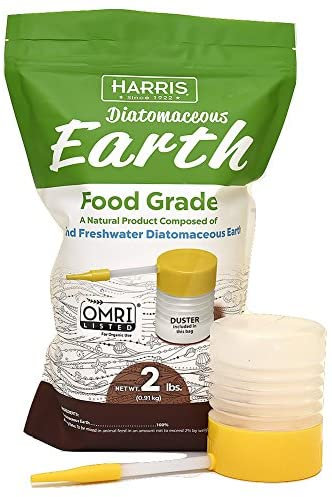Diatomaceous Earth For Long Term Storage Of Wheat & Grain

I will advise how to store diatomaceous earth (see below), and how-to use it to assist long term storage of wheat, grains.
FOOD-GRADE diatomaceous earth (D.E.) can be safely added to long-term storage of grains to protect from insects.
It’s nothing new. Diatomaceous earth has been used by many ancient cultures – mixing into their grain to protect it from insects. It’s still used today in agriculture for grains and animal feed.
~ diatomaceousearth .com
You can also use DE to help preserve food storage items such as grains, flour, legumes, rice, corn, and other dry foods.
Not only does DE kill and repel insects, it also absorbs moisture, which helps keep food dry and mold-free.
Another perk of using DE is that it is completely natural, so it helps eliminate the need for artificial preservatives.
What is Diatomaceous Earth?

Diatomaceous earth is made from the fossilized remains of tiny, aquatic organisms called diatoms. Their skeletons are made of a natural substance called silica. Over a long period of time, diatoms accumulated in the sediment of rivers, streams, lakes, and oceans. Today, silica deposits are mined from these areas.
~ National Pesticide Information Center – Oregon State University
Diatomaceous earth is often harvested from areas where large bodies of water once stood and is marketed in two grades – industrial and food grade.

Industrial Grade DE
Industrial Grade diatomaceous earth is used for many purposes including water filtration systems for swimming pools.
Food Grade DE
Food grade natural freshwater diatomaceous earth is perhaps best known for its use as a non-toxic insecticide in agriculture for grain storage. Additional uses include on pets (flea control), general bug/insect control, ingestion for parasite elimination, protect animal feed from infestations, and more.
mined in Nevada:
>> FOOD-GRADE (D.E.)
(view on amzn)

How to store Diatomaceous Earth
I also use this with my chickens. So I always have a few bags of this stuff around. It’s like powder! Therefore, you need to keep it dry. It has an indefinite shelf life. But there are a few ways to make it more convenient to store and use.
Harris DE Spreader with Scoop and Adjustable Top
(view on amzn)
[ Read: Diatomaceous Earth For Chicken Coop Mites And Bugs ]
How much Diatomaceous Earth (D.E.) to add in 5-gallon bucket of Grain
Food Grade diatomaceous earth can be used as an organic method to rid wheat / grains of bugs and insects. It is particularly useful for long-term storage of grains, yet it is not harmful to man or animals. It is also inexpensive and easy to use.
1/2 Cup per 5-Gallon Bucket of Grain
Add 1/2 Cup of DE for every ~25 pounds of dry food / grains. This is very close to the typical weight of a 5-gallon bucket filled with wheat, grain, legumes, rice, etc.. Add in layers. Roll it around to mix well.
1 teaspoon of DE for every pound of food.
How I Add DE to my 5-Gallon Buckets
The way I do it is while staging one or more 5-gallon buckets for the process of long-term food storage (with Mylar bag inserts, O2 absorbers, etc..),
I will set aside a single bucket for pre-mixing the ingredient (e.g. wheat berries, or rice, etc.) with the diatomaceous earth.
I use a bucket with a Gamma Seal Lid so that I can screw on the lid and roll it around to mix all the DE together without spillage.
First I add a few inches of wheat berries on the bottom. Then sprinkle on some of the diatomaceous earth (from the 1/2 Cup).
Then add another layer of wheat berries, and sprinkle on some more DE. Repeat until using up the 1/2 Cup.
Then roll it around for a minute or so.
[ Read: More about Gamma Seal Lids ]
Pro Tip: It mixes better if you do half the bucket first. Then roll. Then fill the rest. Roll again.
Note: You might consider doing the mixing and pouring outdoors or in a well ventilated area because the dust can be an issue. Avoid getting this in your eyes or breathing it. It’s safe, but it just might irritate during the process. You might consider wearing a carpenters dust mask.
How Diatomaceous Earth Kill Insects
The microscopic sharp edges and points scratch the exoskeleton of insects causing them to dehydrate / dry out and die. The DE powder also absorbs fats (lipids) from the hard exoskeletons of the insects, drying them even further.
DE makes an excellent pesticide, effectively controlling aphids, thrips, mites, snails, and slugs without harming worms or beneficial soil microorganisms.
IMPORTANT NOTES:
Do not use Industrial grade diatomaceous earth for food storage because it has larger quantities of a highly crystallized form of silica.
Food grade diatomaceous earth for use in food storage has a crystalline silica content of no more than 1-1.5% and has not been heat treated.
Wear Kitchen Gloves! When handling diatomaceous earth, such as mixing with buckets of grain or in the garden, it’s a good idea to wear a dust mask and gloves (kitchen gloves). Breathing in too much may irritate the mucus membranes in the nose and mouth. Handling it will dry out your skin.
I can attest to using gloves because the first time I used it with my bare hands it did indeed quickly dry out the skin and was like having rubbed my hands and forearms in fine sandpaper… Washing up and a good dousing of hand lotion remedied the situation.
DE for ingestion / health benefits
I have widely read that a typical adult ingestion dosage of food grade diatomaceous earth is 1 teaspoon added with a cup of water / juice. I suggest that you do your due diligence, though it is clear that it’s widely used.
[ Read: The Calories in a 5-gallon bucket of Rice, Beans, and Wheat ]
[ Read: 6 Tips For Bug Free Storage ]
